A simple hand signal to the referee is all it takes to call time-out in a basketball game. Off the court, spare time can be harder to claim for student-athletes.
The break between fall and spring semesters hits the pause button on the winter sports season. Classrooms are empty from the end of final exams on December 17 until the new term starts on January 18. Games for many teams resume before classes, however, requiring athletes to cut short their family holiday celebrations and return to campus.
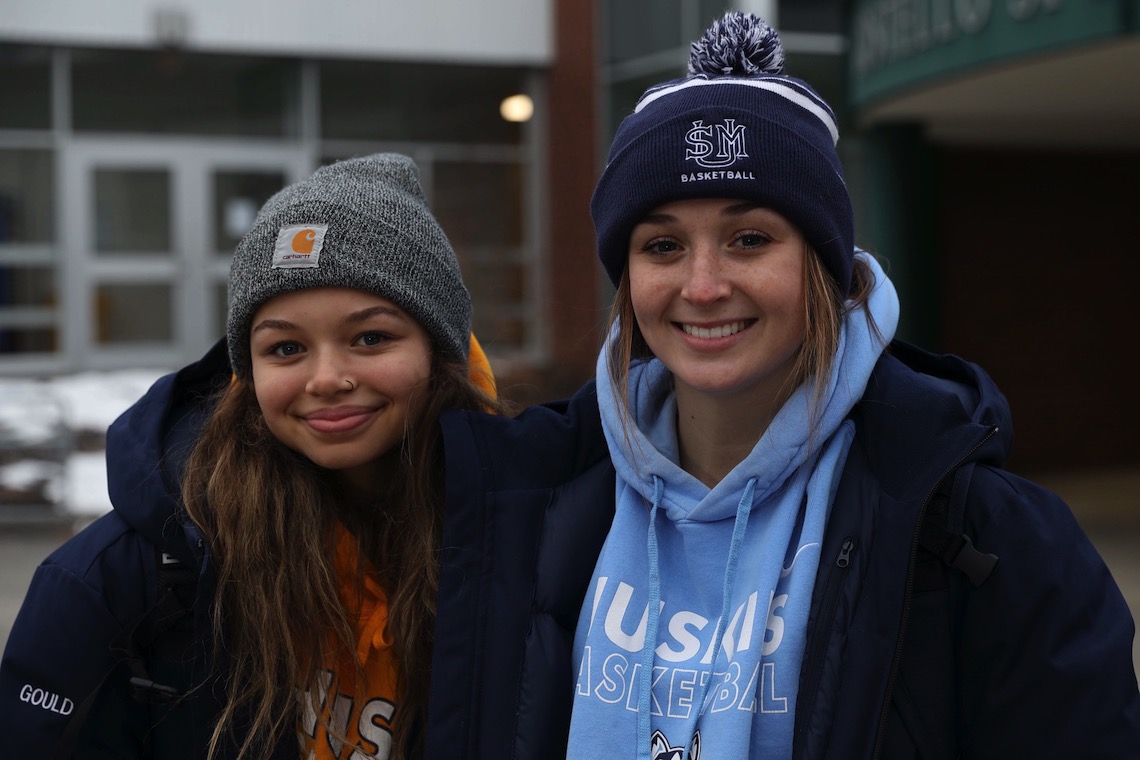
“I call my mom every day,” said Tamrah Gould, a sophomore point guard on the women’s basketball team. “I try to, if not a phone call, just like a text message to check in because obviously we didn’t get to spend as much time as everybody else did with their family at home.”
Gould can make the drive from the Gorham Campus to her hometown of Manchester, N.H., in about 90 minutes, but it’s still far enough to feel the distance during the holidays. Amy Fleming, also a sophomore point guard, had a different outlook on the same situation.
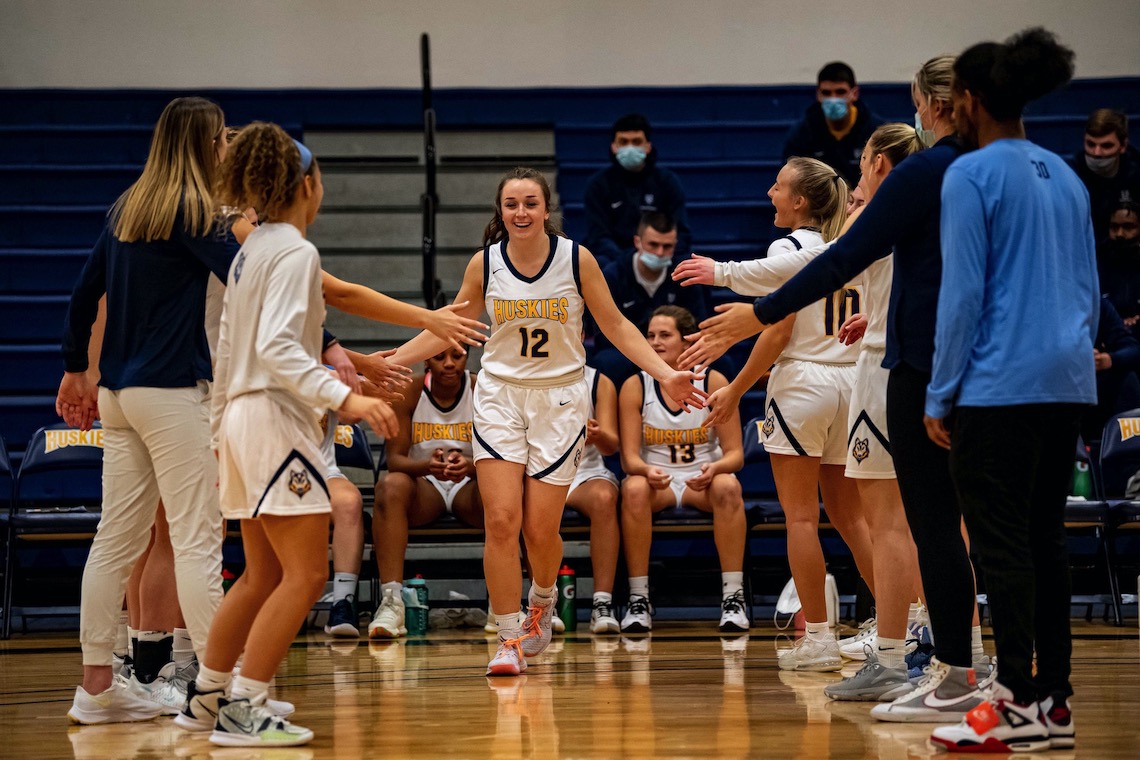
“There comes a time when you’re home when you have too much of your parents, so I think that coming back to campus you get a little bit of a break,” Fleming said.
University policy restricts teams from resuming activities more than five days ahead of the first game back from break. The women’s basketball team will resume playing on January 15 after a recent schedule shake-up. The original schedule had them hitting the road to play Plymouth State on January 5. To be ready, the team reconvened for practice on New Year’s Eve. Fleming had already been on campus several days when Gould arrived that afternoon.
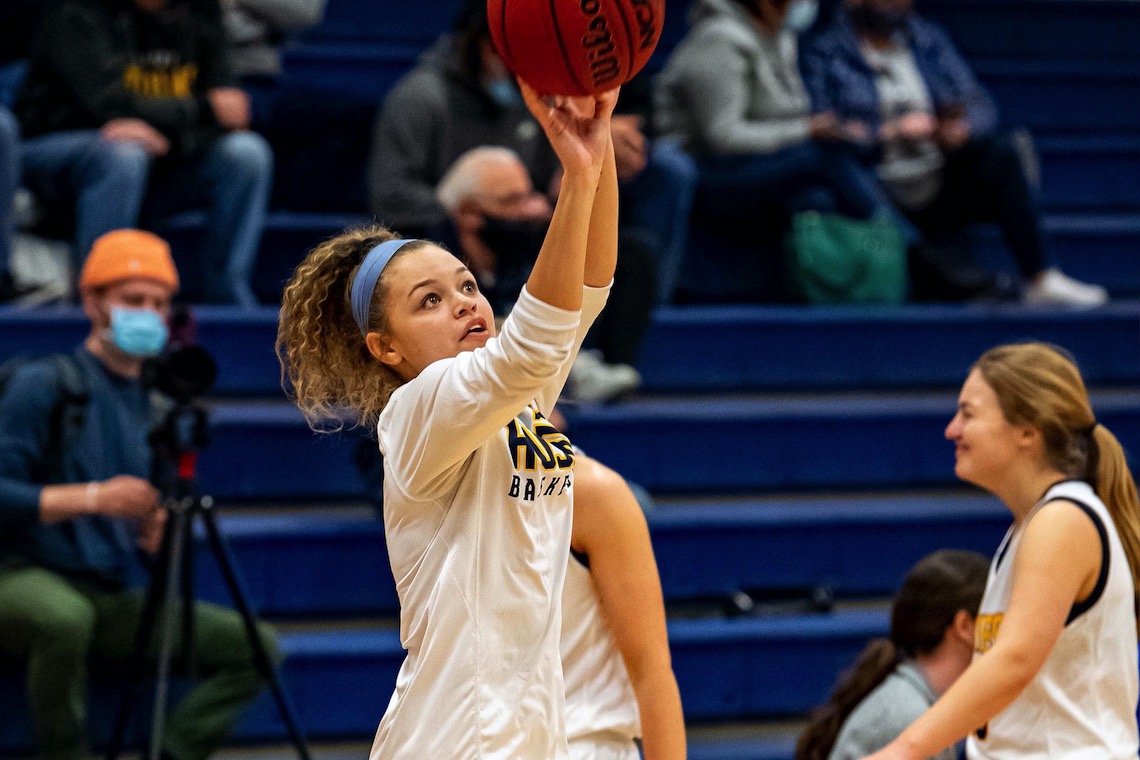
The coaching staff welcomed players back by treating them to a spaghetti supper. Head Coach Samantha Norris had other ideas for bonding activities through the break, such as a scavenger hunt and a Winter Olympics-inspired competition between the various sports teams.
“I think our department is family-like. I want to believe that it is,” said Associate Director of Athletics Kimberly Turner. “When you have that type of environment, it allows people to succeed in all that they’re participating in whether it’s athletics, or whether it’s academics, whether it’s in their own personal development. We try as best we can to create that.”
Costello Sports Complex isn’t just a place to practice. It’s a community hub during break where students can go to exercise, socialize or receive a helping hand. Turner said her staff is doing its best to provide all those services despite a shortage of student workers. Paid slots remain available to work in such areas as game management, the front desk, the equipment room and laundry.
Coaches are another major component of the campus safety net. Norris tries to get to know her players on a personal level so they feel comfortable opening up to her about whatever difficulties they might be facing. She builds relationships with little gestures, like suggesting a podcast that a certain player might like. Norris is also aware that another player may prefer more distance, so she tries to strike a balance with the amount of communication outside of team activities.
“I have a level of admiration for all of our young people who want to keep trying and pushing themselves to the limit,” Norris said. “It’s dark, it’s cold. There’s only a certain amount of time that we actually get to spend with family. Our student-athletes have decided that this family, Southern Maine Athletics, is worth sticking around for and sticking it out for.”
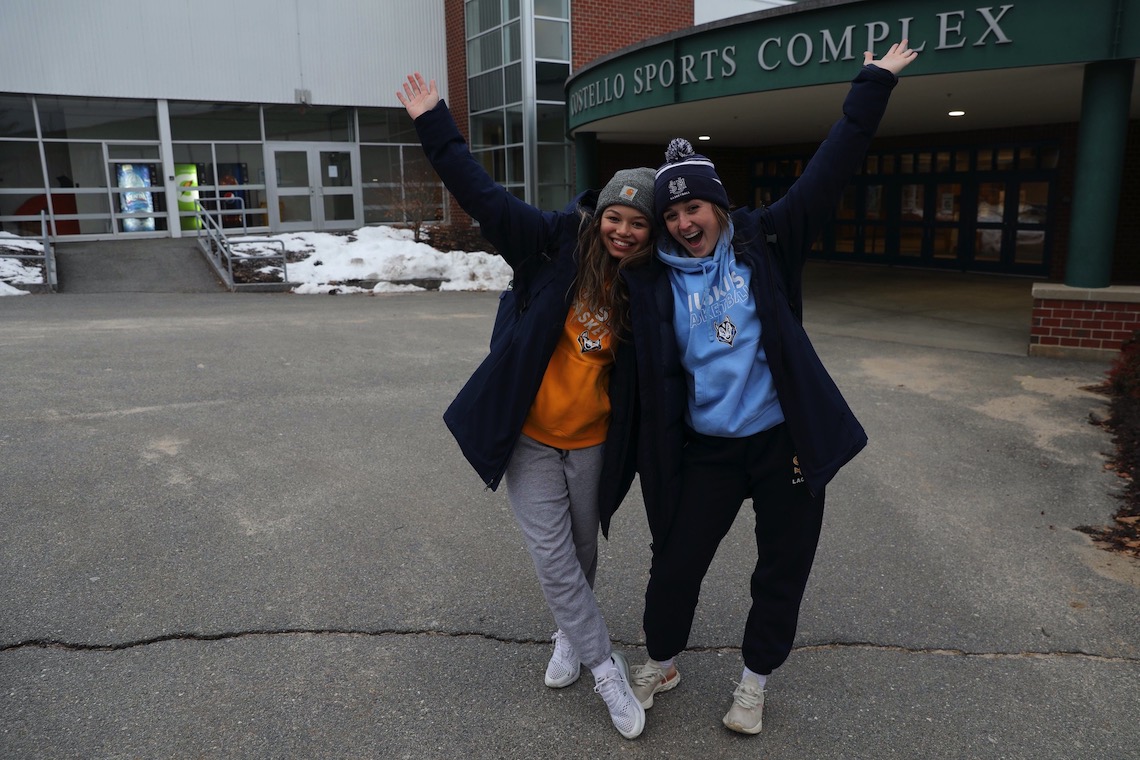
The Office of Residential Life granted permission to 344 students who requested to stay on campus for all or part of the break. Student-athletes accounted for 93 of those slots. Those numbers rebounded after a drop last year due to stricter limitations in response to the COVID-19 pandemic. The affordability of staying on campus plays a big role in its popularity.
“There’s no cost associated with staying for break. And we do that knowing that our campus population is somewhat unique,” said Christopher Broere, Assistant Director for Housing Operations. “We do have a lot of students who are not only working through loans with parents but often taking up their own loans and doing a lot on their own to make sure that they can afford college. We know that the lights are going to be on in the halls already. We’ve got to heat them anyway. And so having those students there doesn’t cost us anything.”
A reduced contingent of Resident Assistants remains on staff to guide students through whatever difficulties they might encounter. Even with more ground to cover, each R.A. has fewer students under their watch during break. Problems that are too big for the R.A.s can be referred to Facilities Management and Public Safety, which remain staffed at all times.
Those who stay on campus understand that food services won’t be operating at full capacity. Only student-athletes have access to dining halls since their regular presence on campus for practice makes it easier to stock and prepare the correct amount of food. Other students come and go too frequently for an accurate accounting. Kitchen facilities in the residence halls remain open for students who choose to prepare their own meals. The heightened self-sufficiency on display between semesters gives campus a different mood.
“It feels almost more truly like there’s a semi-urban bunch of apartments near each other,” Broere said. “Folks all know each other from work or that person I see when I go out and walk my dog. That feels more urban-neighbor than like an entrenched college campus just because the numbers are so much smaller.”
The application to stay on campus asks students to give a reason for their request. Broere said that information is not a determining factor in the approval process, but it can help the University better understand student needs. In some extreme cases, students would be homeless without University housing. Jobs and internships are common reasons, along with participation in sports.
A combination of reasons kept Fleming in Gorham. When she’s not playing basketball, she can often be found working at the Hannaford supermarket just down the street from campus. All of those responsibilities left her with a brief window of time to celebrate Christmas with her family in Berwick.
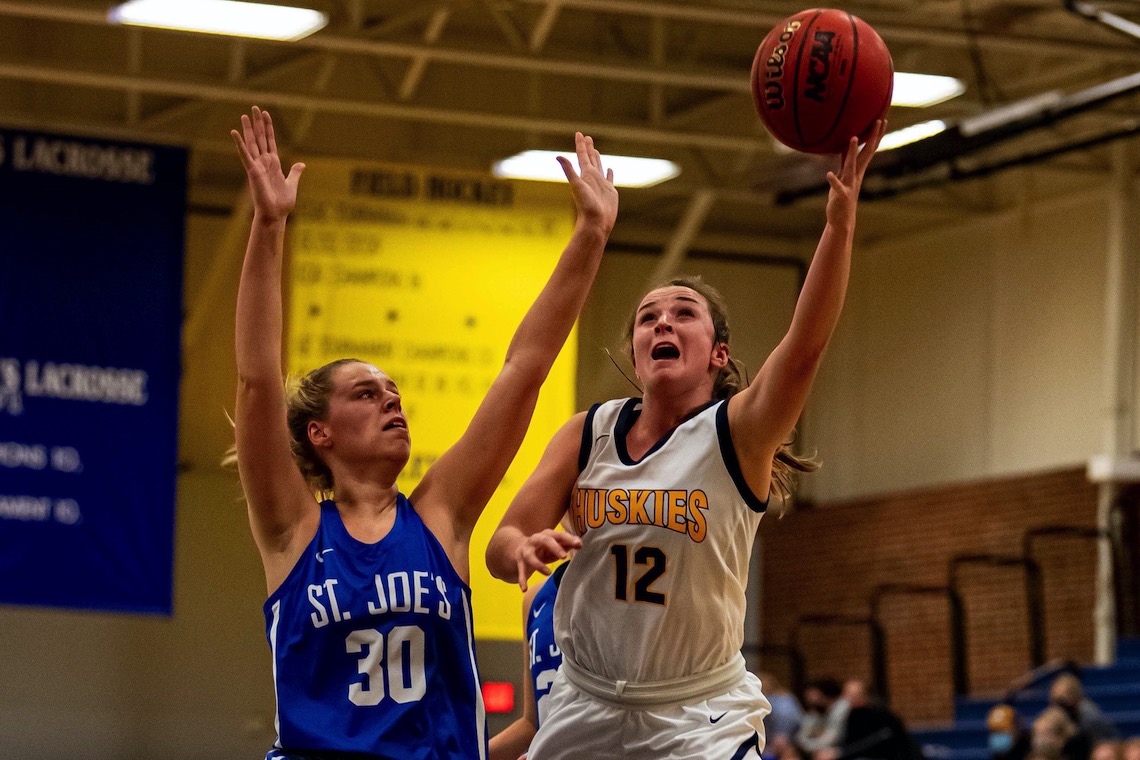
“I think it’s difficult with all my hometown friends at home still. I want to hang out with them,” Fleming said. “But I love the sport so much that it doesn’t seem as too much of a pain.”
Campus life provided Fleming with another set of friends to ring in the New Year. Two of her three roommates also stayed on campus during break, including teammate Ainsley Bryant.
Without classes to keep them busy, they occupied their spare time by making TikTok videos and catching up on favorite TV shows like “The Vampire Diaries.” Another favorite in their streaming queue is the 2014 movie adaptation of “The Giver,” based on the award-winning book by USM alum Lois Lowry ’73, ‘96H.
“Our coaches have been pushing for us to kind of limit our grouping because of COVID,” Fleming said. “We do spend a lot of time together which has been good, helps us get better chemistry, build a better bond.”
Gould practically qualified as an honorary roommate for all the time she spent in Fleming’s suite. Her own roommates were gone for the length of the break, leaving her an entire suite to herself.
“I do really miss them, but I don’t necessarily feel lonely because I do have my team,” Gould said. “So, it’s not like I’m isolated, but I can have time to myself and not have to worry about someone sleeping next to me or if I’m being too loud in the morning.”
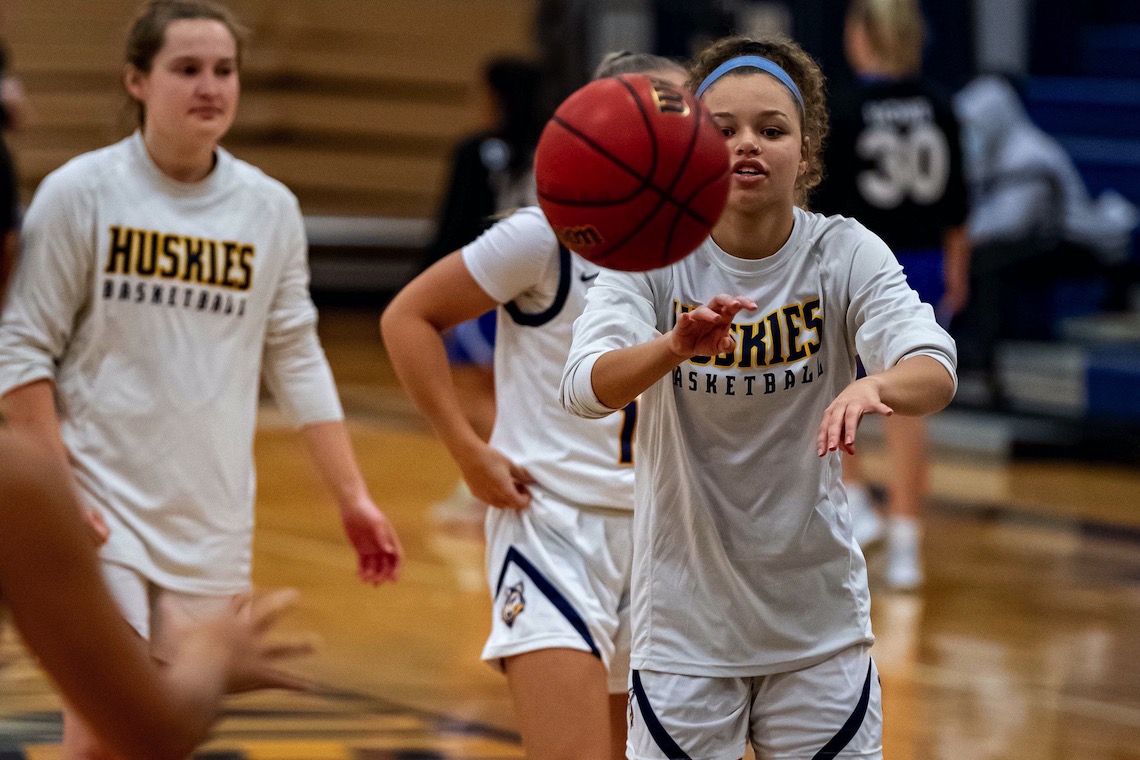
The extra breathing room and slower pace of break are seen by Norris as opportunities for personal development and even healing. She’s watched her players deal with the stress of the COVID-19 pandemic along with the normal challenges of classwork and high-level sports.
“It’s a lot of work. A lot of work is put in by all of the athletes that are here,” Norris said. “I sincerely appreciate how much they give of themselves of their time, of their energy, their physical capabilities, their mental capacity, all of it is really stretched during that time frame.”
The high transmissibility rate of the omicron variant of the coronavirus ensures that the pandemic’s impact will continue to be felt into the spring semester. Testing sites will be open on all three campuses. Individual faculty members will exercise their judgment for the first two weeks of term to decide if their classes will be better served by remote or in-person instruction.
Returning roommates and new students will arrive on campus through the holiday weekend ending on Martin Luther King Jr. Day on January 17. They’ll bring with them the cheers that student-athletes have been waiting weeks to hear.

